The raw data for this article is available in a publicly-shared database in this Google Sheet, which you can access to see additional details.
VCs, investors, and banks have increased their bets on the Sharing/ Collaborative Economy in greater amounts than ever before. The Collaborative Economy is an economic model that uses commonly available technologies to enable people to get what they need from each other. You’ve likely heard of the sharing economy, crowdfunding, P2P lending, the Maker Movement and cryptocurrencies. Each of these is a part of this emerging economy.
I’ve met with many investors to find out what they like about this space. They’re generally seeking fast-growing, two-sided marketplaces of buyers and sellers, riders and drivers, and hosts and guests that involve frequent revenue transactions. Just as eBay and Craigslist own none of the products offered on their sites, these new startups use technology to find idle assets and connect buyers to them, reducing costs for all parties.
While dozens of smaller startups are winning A rounds in the size of $2-10m on average, there have been two extremely large funding into startups: Uber has raised over $2.7B resulting in a market valuation of $41B (not including the recent debt financing), and a recent round funding of $530M into Lyft, bringing their valuation to over $2B. But let’s look beyond the headlines to see the broader trends of funding into this developing market and to understand how this money has been deployed:
Graphs: How Investors are Sharing their Money into the Collaborative Economy:
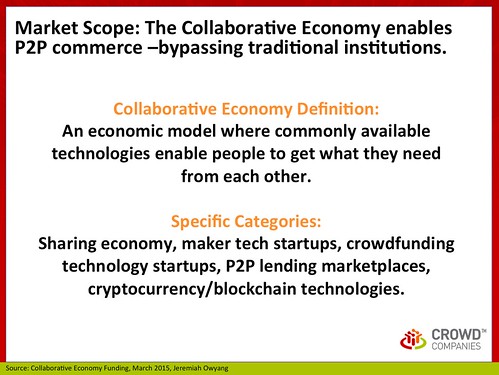
Above: Let’s first define the scope and give examples. This market enables people to get what they need from each other, often not from traditional commerce methods.
Above: A snapshot of this market shows over 200 startups funded, with $32M deployed to the average startup, not including outliers Airbnb, Uber, and Lyft
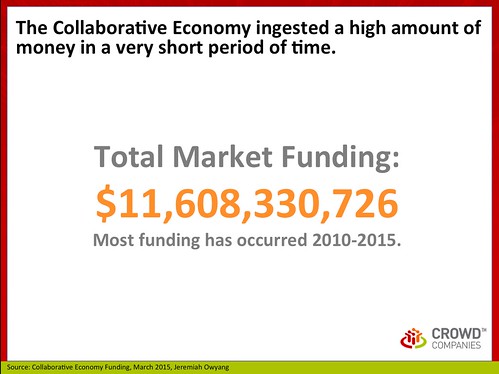
Above: Total of all funding is a whopping $11 Billion funded

Above: Funding has increased year-over-year.
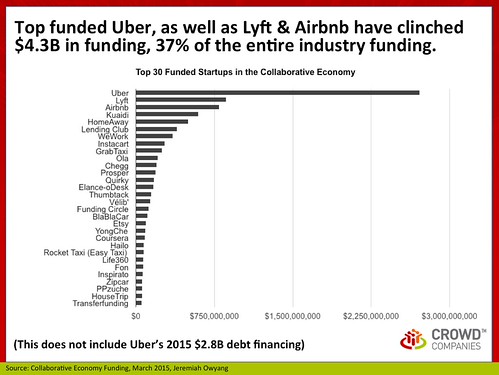
Above: Uber, Lyft, and Airbnb have clinched the most funding. This does not include Uber’s recent billions of debt financing.

Above: Transportation funded above all other industries as expensive, idle goods can be more efficiently deployed.

Above: Not all rounds are equal, most startups have received an A-round, and a few have received a large over $50m
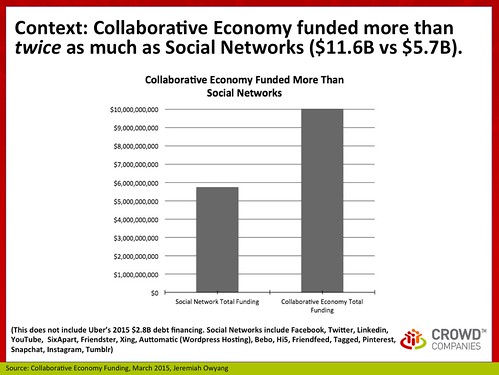
Above: Social Networks, the first market of digital sharing, raised only half the amount of the Collaborative Economy.
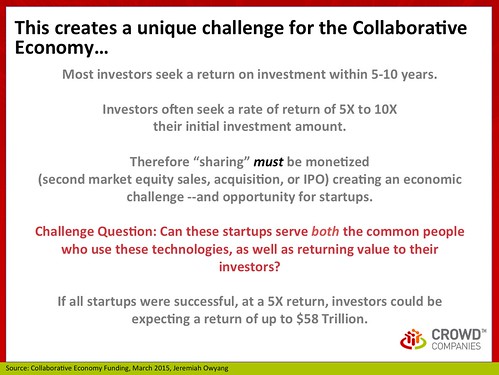
Above: This influx of funding poses risks to the ecosystem.
What it Means:
Looking beyond the raw data, what do these trends tell us about this market?
- Bigger than Social Networks. It is astounding that these startups have been funded by more than twice the amount raised by consumer social networks like Facebook, Instagram, Friendster, YouTube and Myspace. This is a very large market, and it is disrupting traditional business models.
- These startups are trying to find those niches. Take transportation, for example: BlaBlaCar is spreading across Europe and Asia, Lyft is focused on the United States (India and China have produced their own versions), Sidecar is adding package delivery and Uber is spreading globally.
- Transportation, disrupted. Transportation has received the most funding as this market is ripe for disruption: cars, boats, and planes are often expensive, cities are becoming dense, and these assets are infrequently used by their owners.
- Not all will last, but this market is not going away. While these startups won’t all last, they are trying to establish themselves in their niche markets. With all of the funding being poured into them, it means that they are not all going to go away at least not for the next few years.
- Some of these startups are in a conundrum. For those that will stand the test the time some have taken on incredible amounts of funding, and now must balance out the needs of the community (their customers who rely on their service for their livelihood) as well as return money back to their investors within 5-10 years.
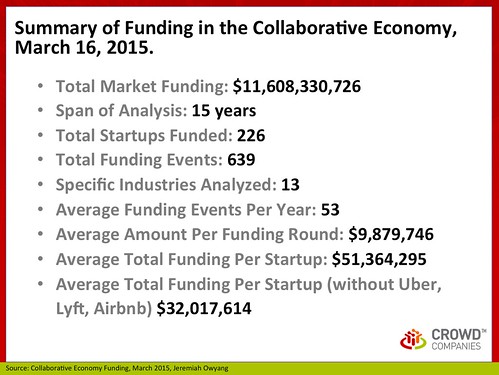
Hello Jeremiah,
Very interesting article. Don’t you think the next two marketplaces that will attract investors, in the next few years, will be Food and Travel. According to me they are, with transportation and lodging, the two ones that are very important in people everyday life and needs. They want to pay less to eat and to travel, so the sharing economy could be a huge benefit for them.